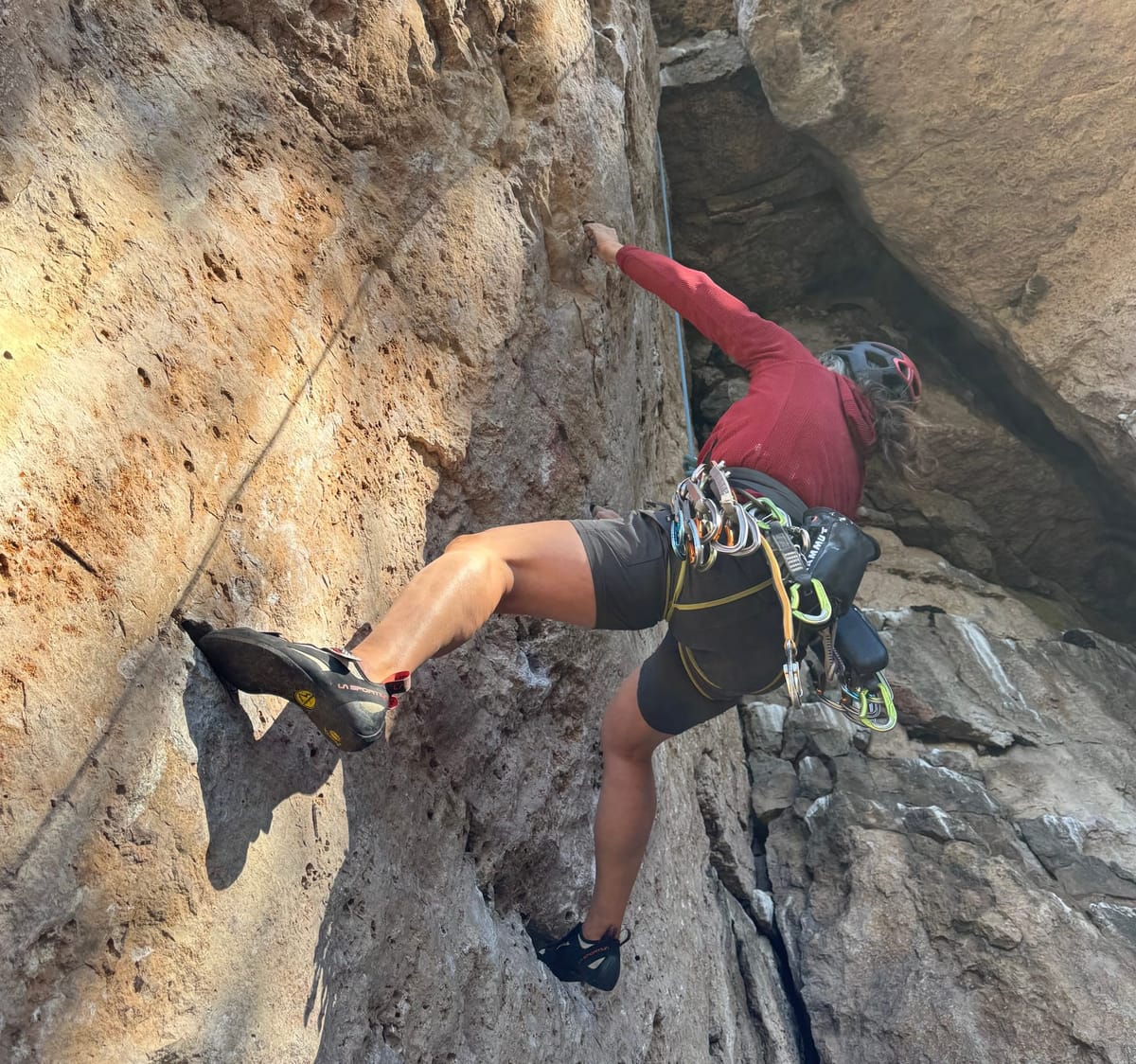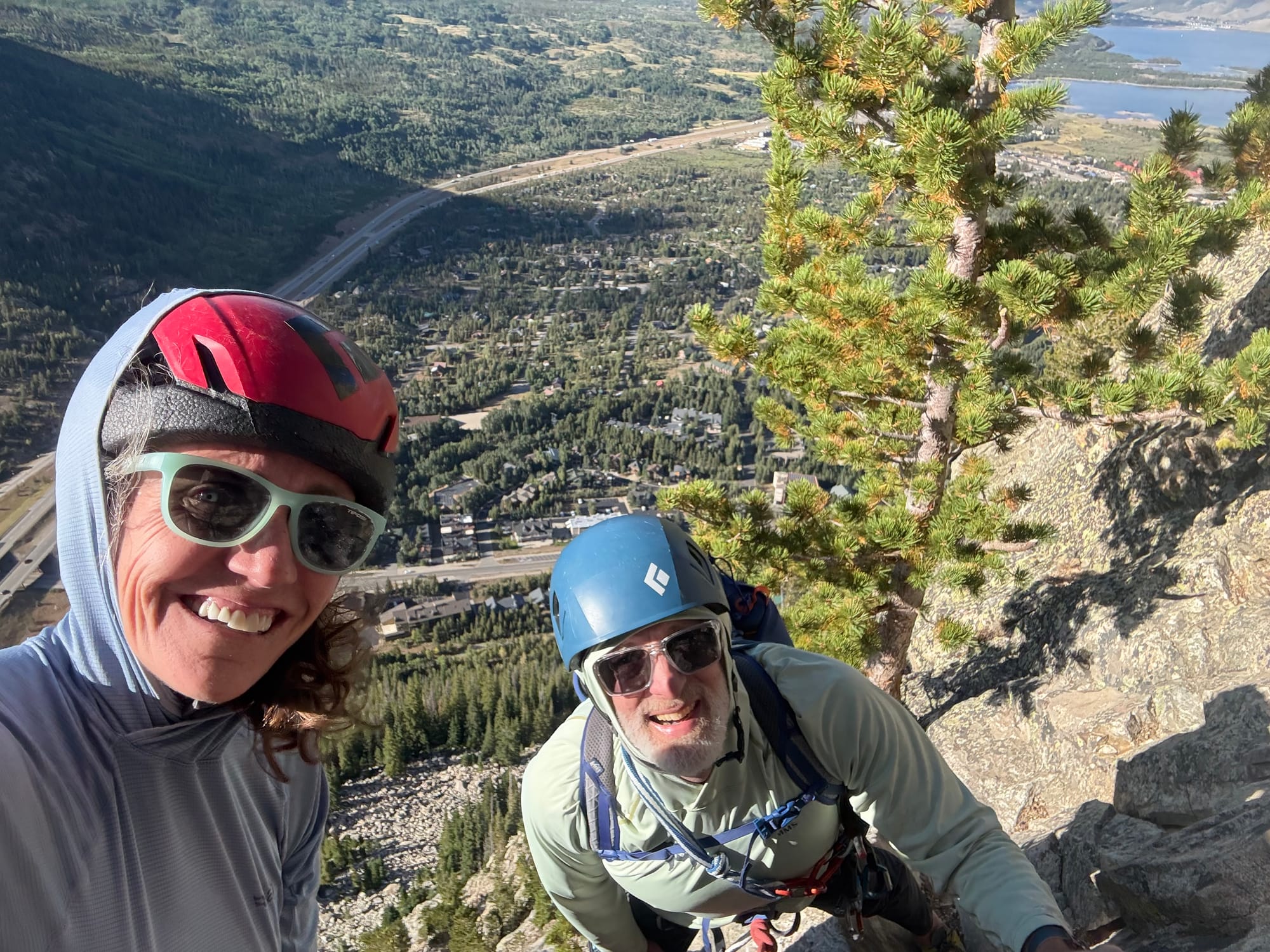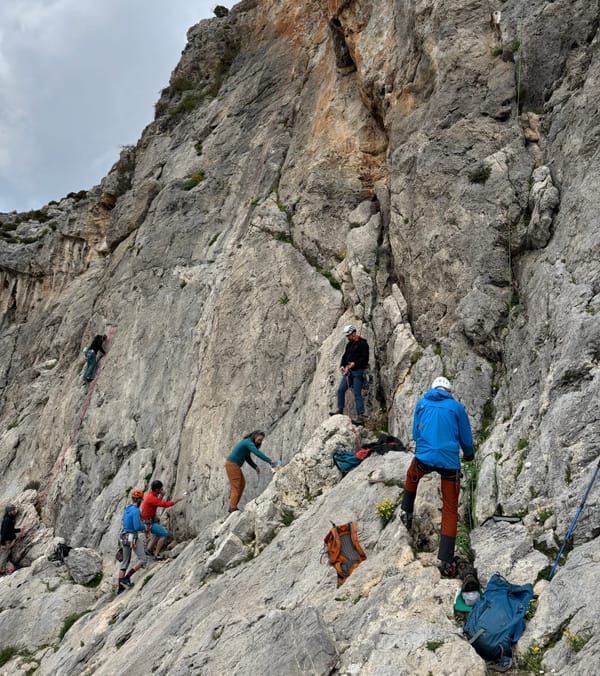Product Market Fit Is A V12 Project That AI Can't Solve!
Right now, we’re seeing a flood of companies rushing headlong into AI convinced it will lift them over the hardest part of the climb. The problem? Their data, their processes, and their product fundamentals aren’t ready.

If you’ve ever tried to climb a V12 boulder problem, you know it’s not about brute force. It’s about sequence, timing, flow and most times some risk. Every move has to be perfect and it takes considerable time and repeated attempts to get it right. You don’t just show up, slap on some chalk and send it. You build up to it with thousands of micro-adjustments, failures, and breakthroughs that teach your body the invisible rhythm of the wall.
Finding product-market fit is no different. It requires a lot of earned calluses to find it and even more to scale it and no, AI can’t do it for you.
The False Promise: Expecting AI to Pull You Over the Crux
Right now, we’re seeing a flood of companies rushing headlong into AI convinced it will lift them over the hardest part of the climb. The problem? Their data, their processes, and their product fundamentals aren’t ready. They have a solution without a specific problem and expect AI to figure it out for them.
Recent reports from McKinsey, Forrester, and Deloitte paint a clear picture:
- 80% of AI projects fail before achieving measurable ROI.
- Most don’t fail because of weak models, they fail because the foundations are brittle.
- The data is messy, the workflows undefined, and the product still searching for its footholds.
That’s like showing up at the base of a V12 with your shoes untied, no chalk, and no clue where the holds are. You don't know how to successfully flash the climb yourself but you are telling everyone else at the Crag how they should do it.
AI won’t find your crux for you. It won’t teach you your sequence. It only amplifies what already exists, which could be bad, really bad.
Product-Market Fit Is the Beta
Every climber knows you have to find your beta, the precise sequence that works for you. You can watch someone else’s send video, but you have to experiment, fail, tweak, and build your own pattern of success.
For startups, this is the messy, beautiful, human process of finding product-market fit (PMF):
- Talking to customers until you understand their pain intuitively.
- Building something small and ugly that solves it.
- Refining it until users can’t imagine working without it.
- Finding the repeatable signal in that chaos.
Only after that process is mapped, after you’ve climbed the problem and understand every hold, does it make sense to train an AI to mimic that motion. Many people believe that practice makes perfect, but seasoned climbers know that practice makes permanent. If you aren't training your AI on a proven system using great data, chasing a specific problem, then that permanent motion could unravel your product success before it even gets started.

AI Is the Training Partner, Not the Climber
AI is incredible at repetition, optimization, and pattern recognition. But it can’t invent a problem worth solving. It can’t feel the friction of the holds or read the micro-texture of the wall.
Think of it like this: once you’ve established the beta and sent the route, you can film it, analyze it, and train your muscles to replicate it automatically. That’s AI’s role.
AI can help you:
- Automate the onboarding flow that’s proven to convert.
- Predict which users are most likely to churn.
- Generate the content variants that already fit your tone and audience.
But AI cannot replace the founder’s intuition, customer empathy, or the experimentation that births true product-market fit. It can only scale the moves you’ve already mastered.
Data Readiness = Solid Technique
All those failed AI projects we’re seeing across industries like finance, fashion, and tech share one painful truth: they tried to climb without sound technique. Their data wasn’t clean, complete, or contextualized.
Without good technique, no amount of strength helps. In climbing, you spend hours literally hanging from a wall. Have you ever tried to hang from a bar for even a minute? Try it. You'll be shocked at how fast you slip off or otherwise burn your arms and have to let go. In business, disorganized data means your AI can’t learn the right moves and is trying to hang on using brute force rather than proper technique.
Before you throw AI at your go-to-market strategy, ask:
- Have we documented the process we want AI to replicate?
- Are our customer insights clear and accessible?
- Do we know which motion creates actual lift versus noise?
If not, you’re just flagging blindly in the dark and your AI will seek the least path of resistance, which may not be a favorable outcome.
The Send Comes After the Sequence
The companies that are “sending it” right now, the ones with real AI traction, didn’t skip ahead. They climbed their way to repeatability first. They:
- Found their crux (the one metric or motion that really matters).
- Learned the sequence (the repeatable path to growth).
- Then layered AI to make those moves smoother, faster, and more scalable.
That’s the formula: human discovery first, AI efficiency second.

Final Thought: The AI Beta Isn’t Yours Until You’ve Climbed It
Every founder and product team wants the send photo, the one on top of the mountain of success. But if you let AI start climbing for you before you’ve felt the rock yourself, you’ll never understand what makes your product stick. You'll build a solution that doesn't have a problem and wonder why customers can't understand your vision.
AI is the strongest partner you’ll ever have once you’ve earned your own calluses, but it can’t pull you through the crux of product-market fit. That’s the V12 problem every company has to climb the hard way. Start with the problem. Solve it. Iterate until customers have to have it. Finally, send it!





